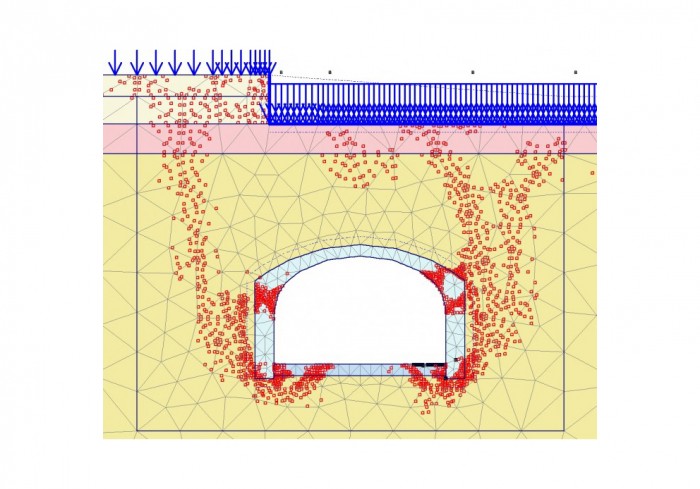
This paper is presented as part of the works to deliver the southern section of High Speed Two (HS2) Phase One – Lots S1 and S2 (Area South) – which includes the Northolt Tunnels and the Euston Tunnel and Approaches, being delivered by the SCS Integrated Project Team.
#Python plaxis 2d manual
In order to optimise the manual input and export of analysis data described above, automation was applied to the design process as outlined below (refer also to Figure 1), and described in further detail in the following sections. After the analyses have been completed, the results are typically exported and plotted in Excel for the purposes of checking and drawing comparisons either between adjacent cross sections or to study the effects of varying the input parameters.
#Python plaxis 2d software
The design input conditions at the location of each selected cross section are then usually input into FE software such as Plaxis for analysis, requiring manual input and editing of parameters via the software’s graphical user interface (GUI). As the engineer is required to identify the possible ultimate and serviceability limit states that are likely to affect the structure, engineering judgement needs to be applied when choosing the locations of these cross sections to ensure that the critical combinations of topography, soil stratigraphy, structural geometry and loading conditions are selected. The design of underground structures using 2D geotechnical finite element (FE) modelling typically involves the selection of a limited number of cross sections through the structure for analysis. Due to the complex and developing design, these models would not be feasible using manual model generation and interrogation. The same Python scripting was then used to interrogate the models to understand the structural loads and geotechnical displacements caused by the construction activities. Python scripting was used to generate the geometry and excavation sequencing. Instead, comparison of the output allowed the critical sections to be identified, with additional optimisations and sensitivity checks targeting these locations to ensure an appropriate design outcome.Īutomation was also applied where geometries, such as the Euston Crossover Tunnels and Euston Cavern – 15m Stacked Drift, were not suitable for manual staging and geometry generation.
#Python plaxis 2d full
By automating a number of manual processes, the design team was able to carry out a large number of analyses covering the full range of design input variables without identifying the critical combinations in advance. One learning unit is applied to each attendee’s Bentley Transcript for self-reporting.This paper describes novel methods and tools used to set up, run and review results from multiple 2D finite element analyses for the High Speed Two (HS2) Euston Scissor Cut, using the project BIM model, Plaxis’ remote scripting Python wrapper and PowerBI. The Geotechnical Analysis SIG is open to all Bentley users, so feel welcome to invite your colleagues.

Adjust the procedure to best meet your needs.Apply and understand the possibilities of this automated procedure.Run a Python script to assist in creating 2D embankment sections.How it can be used with PLAXIS 2D CONNECT Edition.

During this Geotechnical Analysis Special Interest Group virtual workshop, we will look at how the Python script is developed and Use of Python scripting can be helpful when generating cross-sections and provide all necessary results for evaluation. This can be time-consuming and may take much effort as each cross-section is generated manually. With a long road embankment, multiple cross-sections in the 2D model must typically be created to evaluate stability and settlements for the whole road embankment.


 0 kommentar(er)
0 kommentar(er)
